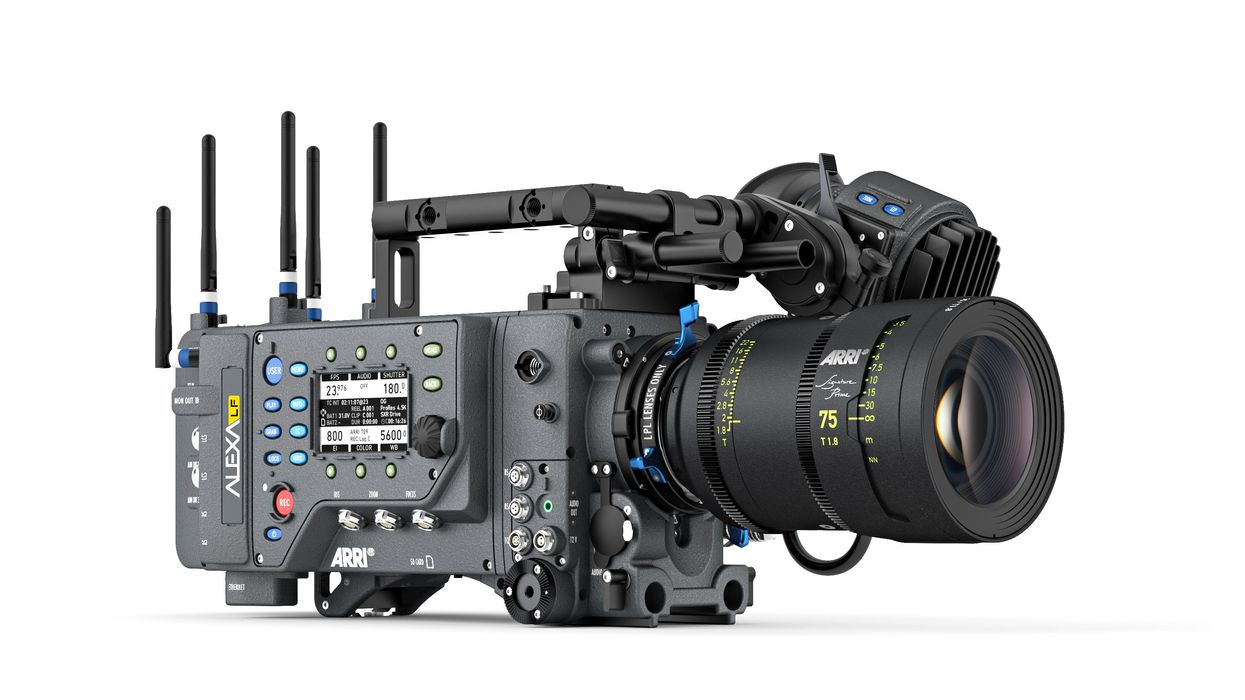ARRI Finally Releases a Real 4K Alexa (and on Their Terms)
Popular German camera manufacturer ARRI has released a 4K version of their dominant camera platform with the new Alexa LF for Large Format.

Whether or not you can actually see the difference, large pressure continues to mount for 4K capture solutions, especially from online platforms like Amazon and Netflix. For a number of years, ARRI has kept trucking along with the Alexa, a 2.8K camera making the argument that color accuracy, flesh to neutral reproduction, build quality, latitude, and overall beauty mattered more than just "more Ks." In fact, when the real pressure increased from the streams for 4K, ARRI appeased them by simply adding in-camera upscaling of the native 2.8K imagery to 4K files. It was impressively stubborn. Considering the dominance of Alexa on everything from Sundance indies to Oscar nominees, their solution has always appeared as a smart one.

While they released the ALEXA 65 in 2014—capable of 6k capture—the platform has always been rental-only, clearly focused on the top end of the marketplace. That changes now. ARRI has just announced a 4K ALEXA that is clearly more targeted to the rest of us: the Alexa LF.
While there are some innovations, the platform is built around the same ALEV III sensor (dating to the original 2010 Alexa) used in both the Alexa line and the Alexa 65. Within the Alexa 65, it's actually 3 ALEV sensors turned vertically and mounted together in what ARRI call an A3X layout. In the new Alexa LF, it's two ALEV III sensors turned on their side in an A2X pattern. ARRI is confident that the ALEVIII has a good sensor and the company clearly wants to maximize its use, which is impressive considering the generations of sensors that RED has gone through since 2010 (when they were on MX, and have since gone through Dragon, Helium, and the current Monstro).

Aside from the marquee feature (you know, real, not-upscaled 4K capture on an affordable Alexa that people might actually purchase), the LF has another innovation: a brand new LPL lens mount. This mount is not only bigger than the traditional PL lens mount, but it's also different from the XPL lens mount used on the Alexa 65. XPL was originally developed in the 1980s for film 65mm capture formats, and thus has a deep flange focal distance of 72mm, which makes sense when you need to squeeze a spinning shutter behind the lens. Since digital is largely mirrorless (with the exception of the Alexa Studio and its optical viewfinding option), ARRI has the freedom to push the distance shorter, and has done so with the new LPL mount.
The new mount has a flange distance of 44mm, which will allow for more options in the lens design to cover the larger sensor. It also allows for ARRI to inclde an LPL-to-PL adapter with every LF it shipps, although, of course, Super35mm lenses will need to capture imagery windowed since they won't be able to cover the full sensor. Being ARRI, they are always careful to launch a fully integrated system together, and they are launching a new line of ARRI Signature lenses to work with the LPL mount and the LF sensor.

Bodies ship March, lenses ship June 2018. Learn more at ARRI Large Format.
Tech Specs
- 36.7 x 25.54mm maximum sensor size
- 4448x3096 maximum capture resolution
- 150fps possible in 2.39x1 4448x1856 ARRI Raw
- ALEV IIII Sensor
- A2X layout
- Brand new LPL lens mount
- Ships with LPL to PL adapter
- 44mm flange focal distance
- 12mm wider and longer than standard Alexa











